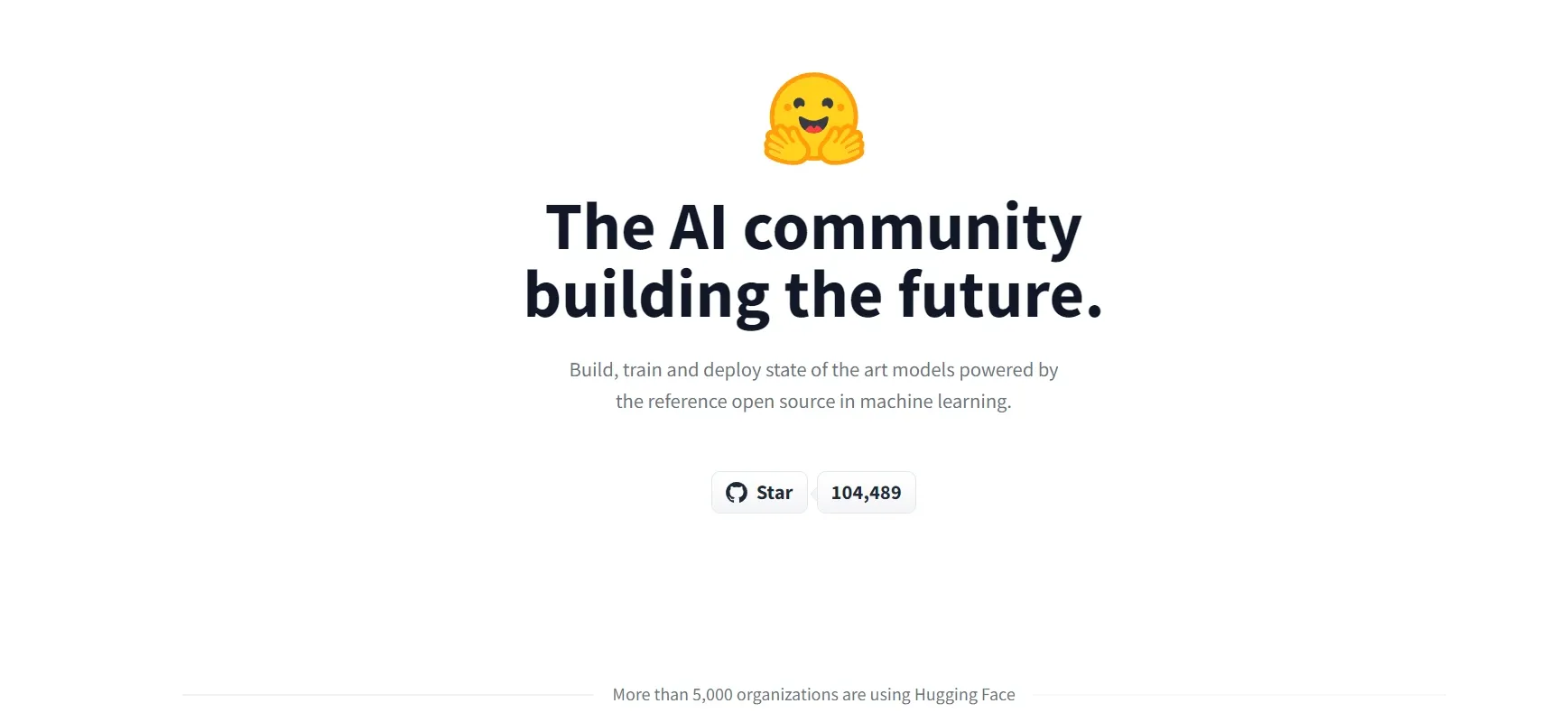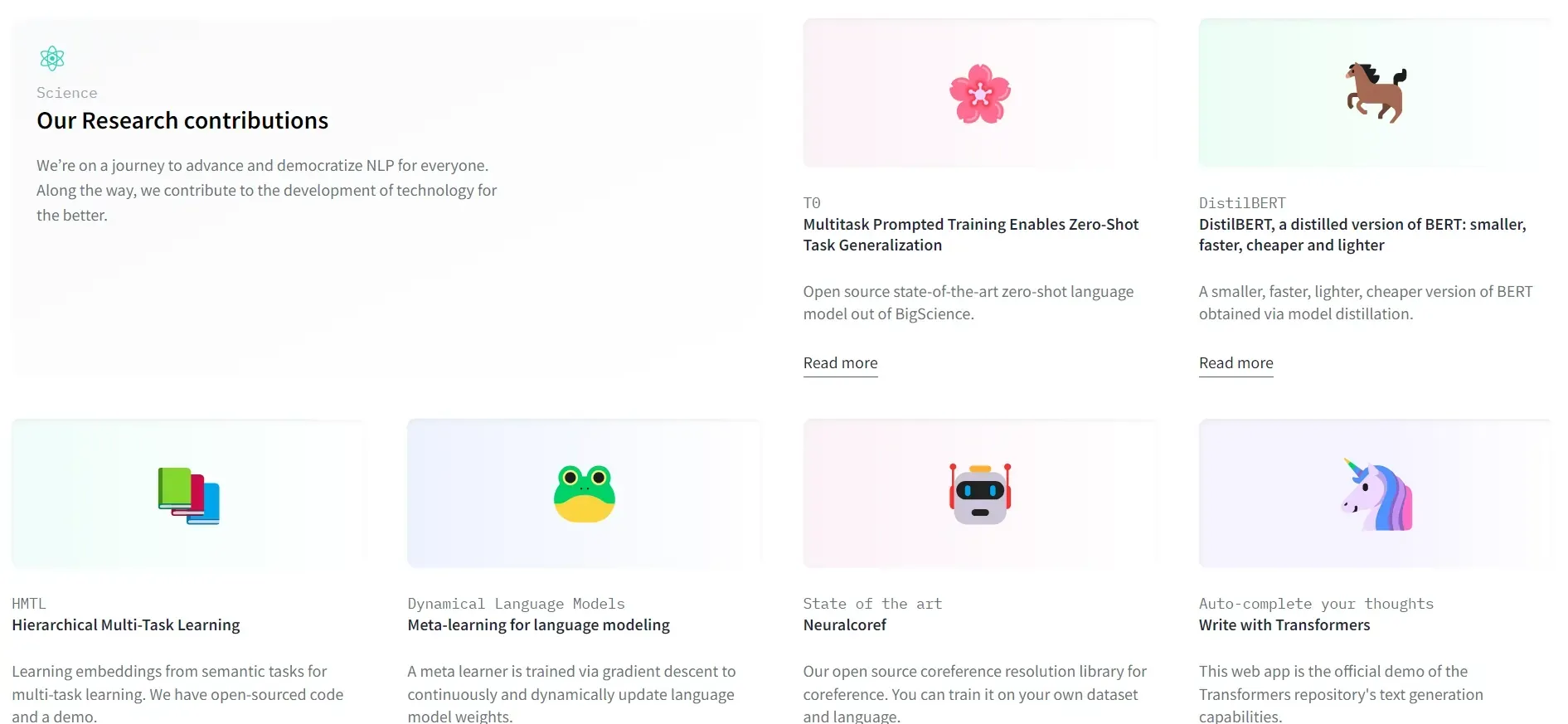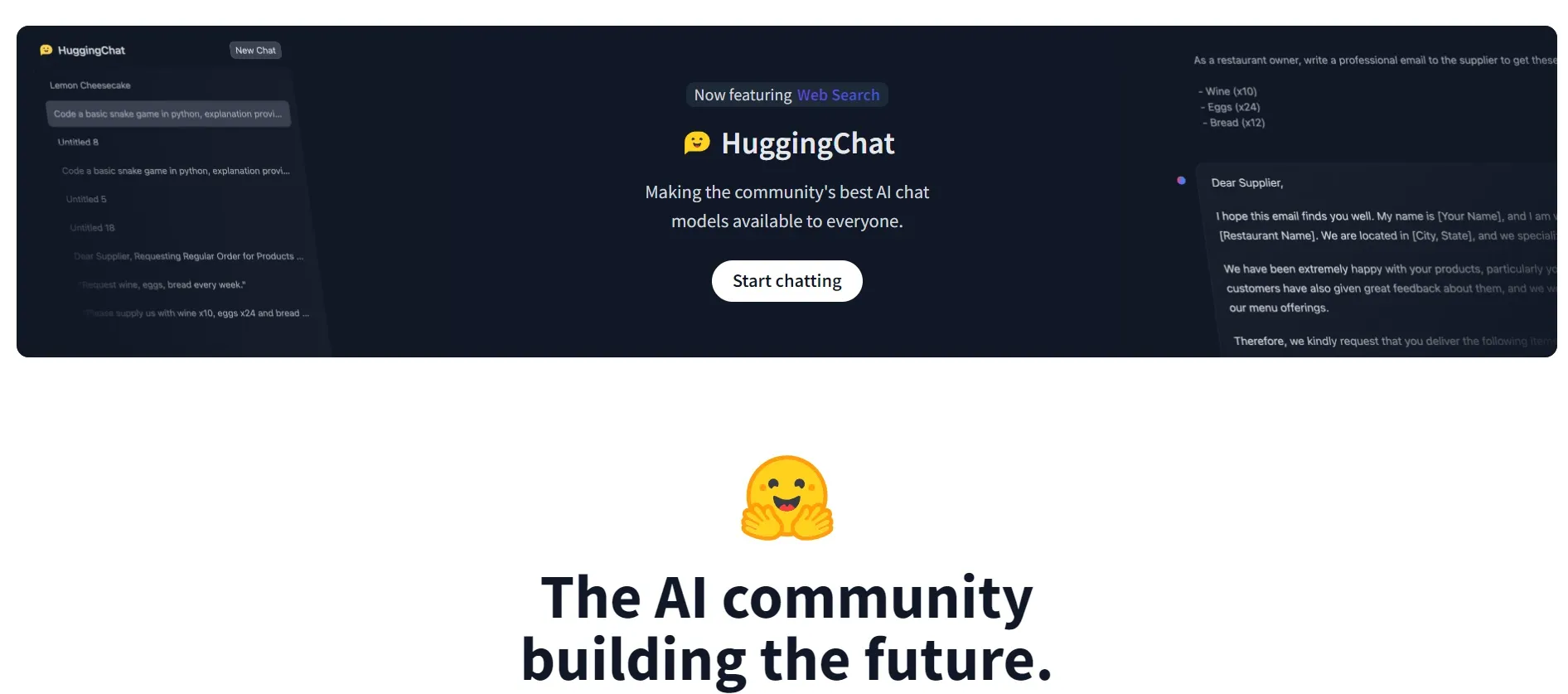Introduction
Welcome to our blog where we dive into the fascinating world of Natural Language Processing (NLP) frameworks.
In this article, we will specifically explore Hugging Face, a renowned platform that has revolutionized the way we process and understand language. Understanding the pricing and features of Hugging Face is crucial for anyone seeking to leverage its capabilities effectively.
NLP frameworks have become an indispensable tool in various language-related tasks such as sentiment analysis, text classification, and language generation.
They provide developers with pre-trained models, libraries, and tools to simplify complex NLP tasks and expedite their projects. Hugging Face is one such framework that has gained significant popularity in recent years.
What is Hugging Face?
Hugging Face, at its core, is an open-source platform designed to facilitate NLP tasks and workflows. It provides a comprehensive suite of tools, libraries, and pre-trained models that empower developers to build and deploy advanced language models quickly.
By leveraging Hugging Face, developers can focus on their specific NLP applications without worrying about reinventing the wheel.

History and Background
Hugging Face has an intriguing origin story. It began as a research project initiated by a group of passionate individuals who recognized the need for a more accessible and user-friendly NLP framework.
Over time, Hugging Face gained momentum, attracting contributors and enthusiasts from around the world. Today, it stands as a leading platform in the NLP landscape, with numerous milestones and achievements to its name.
Suggested Reading: How NLP Language Models Improve Conversational Interfaces?
Key Features
Hugging Face boasts a rich set of features that make it a preferred choice for NLP enthusiasts. Let's explore some of its main features:
- Model Zoo: Hugging Face's Model Zoo is a treasure trove of pre-trained language models.
It offers a vast collection of models across different languages and domains, allowing developers to leverage state-of-the-art models without investing significant time and resources in training them from scratch. - Transformers Library: The Transformers library is one of Hugging Face's flagship offerings.
It provides a high-level API for working with transformer-based models, enabling developers to fine-tune, evaluate, and utilize these models effortlessly. - Pipeline and Tokenizers: Hugging Face simplifies the NLP pipeline by providing intuitive APIs for common tasks like text classification, named entity recognition, and question answering.
Additionally, its tokenizers help process text efficiently, breaking it down into meaningful units for further analysis.
These features, among others, empower developers to expedite their NLP projects and experiment with cutting-edge techniques without the need for extensive domain expertise.
Why is Hugging Face Popular?
Open-Source Nature
One of the key factors contributing to Hugging Face's popularity is its open-source nature. Open-source frameworks foster collaboration, innovation, and transparency within the developer community.
Hugging Face's commitment to openness and collaboration has attracted a vast community of contributors and users, who continuously enhance and expand its capabilities.
Model Repository
Hugging Face's model repository is a game-changer in the NLP landscape. It serves as a centralized hub for accessing, sharing, and fine-tuning pre-trained models.
The repository's extensive collection of models, spanning various languages, domains, and applications, enables developers to find suitable solutions for their specific needs. The availability of diverse models significantly reduces development time and improves the quality of NLP applications.
Community Support
The Hugging Face community is vibrant and highly engaged. Developers, researchers, and NLP enthusiasts actively participate in discussions, share insights, and contribute to the platform's growth.
The community-driven approach ensures that users have access to valuable resources, tutorials, and support channels. Whether through forums, GitHub repositories, or dedicated community spaces, Hugging Face users can seek assistance, collaborate on projects, and stay updated with the latest advancements in the NLP field.
Who Should Use Hugging Face?
Hugging Face is a versatile platform that caters to a wide range of professionals working in the field of natural language processing (NLP).
Whether you're an NLP researcher, a data scientist, a machine learning practitioner, or a developer, Hugging Face has something to offer. Let's explore how each of these roles can benefit from utilizing Hugging Face's powerful tools and resources.
NLP Researchers
As an NLP researcher, Hugging Face can be your go-to companion in advancing your work. With its vast collection of pre-trained models, you can save valuable time and effort by building upon existing knowledge.
Hugging Face simplifies the process of experimenting with different models, allowing you to focus on exploring new ideas and pushing the boundaries of NLP.

How Hugging Face Aids Researchers in Their Work
Hugging Face provides a wide array of pre-trained models and algorithms, covering a range of NLP tasks such as text classification, named entity recognition, and machine translation.
These models act as a starting point for your research, providing a solid foundation for your experiments. The platform also offers a collaborative environment where researchers can share and discuss their findings, fostering a vibrant community of NLP enthusiasts.
Examples of Research Use Cases
Researchers have leveraged Hugging Face for various exciting research projects. For instance, some have explored the use of transfer learning to improve performance on specific NLP tasks.
Others have investigated novel techniques for fine-tuning pre-trained models to achieve state-of-the-art results. The flexibility and extensibility of Hugging Face enable researchers to tackle complex challenges and contribute to the advancement of NLP.
Data Scientists and Machine Learning Practitioners
For data scientists and machine learning practitioners, Hugging Face opens up a world of possibilities when it comes to ML-driven NLP applications.
The platform provides powerful tools and resources to streamline the development and deployment of machine learning models in real-world scenarios.
Utilizing Hugging Face for ML-driven NLP Applications
Hugging Face's extensive library of pre-trained models and pipelines allows data scientists and ML practitioners to quickly prototype and iterate on NLP projects.
You can easily fine-tune these models on your specific datasets, adapting them to your unique problem domain. This accelerates the development process and enables you to deliver high-quality ML solutions with reduced effort.
Real-World Applications and Success Stories
The real-world applications of Hugging Face are numerous and diverse. From sentiment analysis in social media monitoring to chatbot development and language generation, Hugging Face has proven to be instrumental in solving complex NLP challenges.
Success stories abound, with organizations leveraging Hugging Face's tools and models to gain actionable insights from large volumes of text data, automate customer support processes, and enhance language understanding in various industries.
Developers and Engineers
Developers and engineers can seamlessly integrate Hugging Face into their software development projects, enabling them to leverage state-of-the-art NLP capabilities with ease.
Integrating Hugging Face into Software Development
Hugging Face provides a range of APIs and libraries that simplify the integration of NLP models into your applications. You can utilize these resources to perform tasks like text classification, entity recognition, and summarization, empowering your applications with natural language understanding capabilities.
The platform's developer-friendly documentation and active community make it easy to get started and find support when needed.
APIs and Libraries for Seamless Implementation
Hugging Face offers powerful APIs such as Transformers and Datasets, which provide access to pre-trained models and datasets for NLP tasks.
These APIs abstract away the complexities of model deployment and allow developers to focus on building innovative applications.
Additionally, the open-source nature of Hugging Face encourages community contributions, ensuring continuous improvement and expanding the platform's capabilities.
How to Get Started with Hugging Face?
Hugging Face is an incredible tool for natural language processing (NLP) tasks, offering a range of features and capabilities.
In this section, we'll guide you through the process of getting started with Hugging Face. Whether you're a beginner or an experienced NLP enthusiast, this step-by-step guide will help you dive into the world of Hugging Face.
Installation and Setup
Step-by-step guide to installing Hugging Face: To begin your journey with Hugging Face, you'll need to install it on your machine. Follow these simple steps:
- Step 1: Open your terminal or command prompt.
- Step 2: Install the Hugging Face library using pip, a popular package manager for Python:
Copy codepip install transformers - Step 3: Once the installation is complete, you're all set to start using Hugging Face!
Platform compatibility and requirements: Before diving into the installation process, it's essential to ensure that your system meets the necessary requirements for Hugging Face.
These requirements may include specific versions of Python and other dependencies. Refer to the official Hugging Face documentation for detailed information on platform compatibility and system requirements.
Basic Usage and API Overview
Now that you have Hugging Face installed, let's explore its basic usage and get an overview of its API. Hugging Face provides a powerful API that simplifies and streamlines various NLP tasks.

Here are a few examples to give you a taste of what you can achieve with Hugging Face:
- Introduction to Hugging Face's API: Hugging Face offers a comprehensive API that allows you to perform a wide range of NLP tasks. Whether it's text classification, named entity recognition, or text generation, Hugging Face has got you covered.
Familiarize yourself with the API's structure, functions, and available methods to unleash the full potential of Hugging Face. - Examples of common tasks and operations: Let's dive into some practical examples of what you can achieve with Hugging Face.
Explore how to fine-tune pre-trained models for specific tasks, leverage Hugging Face's transformers library for text generation, and discover other useful functionalities. These examples will help you grasp the versatility and power of Hugging Face.
Tutorials and Learning Resources
To truly master Hugging Face and maximize its potential, it's essential to explore the wealth of tutorials and learning resources available. Here's where you can find the information you need:
- Official Hugging Face tutorials and documentation: Hugging Face provides official tutorials and documentation that offer a structured approach to learning.
These resources cover everything from the basics to advanced topics, helping you gain a solid understanding of Hugging Face's capabilities. Explore the official tutorials and documentation to enhance your proficiency with Hugging Face. - External resources for further learning: In addition to the official resources, there is a vast community of NLP enthusiasts and experts who actively share their knowledge and experiences.
Browse through blogs, forums, and online communities dedicated to NLP and Hugging Face. Engage in discussions, ask questions, and learn from the collective wisdom of the community.
With the installation process complete, a good grasp of the API, and access to learning resources, you're well on your way to becoming proficient in using Hugging Face. Take your time to experiment, explore, and push the boundaries of what you can achieve with this remarkable NLP framework. Happy coding!
Conclusion
In conclusion, Hugging Face offers a powerful framework for NLP enthusiasts and professionals alike. By exploring its pricing and features, you can determine whether it meets your requirements and aligns with your budget. The free version provides a fantastic starting point, while the paid options unlock additional capabilities and support.
Don't miss out on the potential of Hugging Face in accelerating your NLP projects. Whether you're a beginner or an experienced practitioner, Hugging Face's robust features and vibrant community will undoubtedly enhance your NLP journey. Get started today and unlock the power of Hugging Face!
Suggested Reading: The Future of Automation: NLP and Voice Assistants
Frequently Asked Questions(FAQs)
Is Hugging Face suitable for beginners in NLP?
Yes, Hugging Face is beginner-friendly. It provides extensive documentation, tutorials, and examples that help newcomers grasp the fundamentals of NLP and get started quickly.
Are there free resources available in Hugging Face?
Yes, Hugging Face offers a range of free resources, including pre-trained models, datasets, and libraries, which can be accessed and utilized by developers without any cost.
Can Hugging Face be used for both research and production-level applications?
Absolutely. Hugging Face supports both research and production-level NLP applications. Its flexible framework allows researchers to experiment with novel ideas, while its efficient deployment options enable seamless integration into production systems.
How does Hugging Face compare to other NLP frameworks?
A: Hugging Face is widely recognized for its user-friendly interface, extensive model library, and strong community support. It has gained popularity due to its ease of use, wide adoption, and continuous updates, making it a preferred choice for many developers in the NLP community.
Does Hugging Face support multiple programming languages?
Yes, Hugging Face supports multiple programming languages. It provides interfaces and libraries for Python, Java, JavaScript, and more, making it accessible to developers from different language backgrounds.
What real-world applications can benefit from using Hugging Face?
Hugging Face has a wide range of applications, including sentiment analysis, text classification, machine translation, question answering systems, chatbots, and more. Its versatile framework and pre-trained models can be applied to various NLP tasks across industries.


